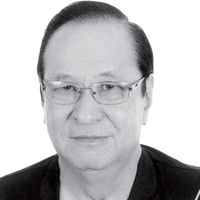Pandemic exposed inequalities

When the pandemic began in 2020, one of the phrases that went around was “we’re all in the same boat.” Many used that phrase to mean that no matter how old you were or where you were from, we were all equally in danger of getting sick and at the risk of a potential COVID infection.
One can see why this was thrown around quite a bit on the surface. After all, COVID did not discriminate. It went after everyone. And, especially in the early days, there was no way of knowing who would get an asymptomatic case versus the full-blown respiratory illness. Indeed, we were all equally scared and susceptible.
However, once we were knee-deep into the pandemic, it became painfully clear that while we were all in the same storm, we were hardly in the same boat. Some were weathering the storm from the safety of a yacht. Others were barely staying afloat on a small dinghy. Some were treading water and just barely keeping their head above the surface.
One of the stark realities unveiled by the pandemic is the harsh inequalities in the world and the country. This continues to be highlighted today. In fact, one of the main safety measures of COVID – social distancing – is a luxury that not even everyone can afford. While those in more affluent neighborhoods can easily maintain distance from one other, those in poorer, more densely populated areas can not.
And all of the other safety protocols are similar – wash your hands regularly, eat good meals, drink vitamins, amp up your immune system. These protocols can be followed under the premise that you have regular access to clean water, alcohol, nutrient-rich food, and vitamins. For families struggling to put food on the table, this is luxury they cannot afford.
We saw it back then; wealthier people kept telling everyone to stay home while those who couldn’t afford not to work had to venture out even at the risk of exposure because the alternative was that their family wouldn’t be able to eat that day. We were far from in the same boat, and whoever said that plague was a great equalizer has probably never seen one firsthand.
Many have said that pandemic response is a community effort because the only way to weather it is if those in a better position help protect those who aren’t. This is a pipe dream, though, and everyone who thought that the world would come together to help battle this together was in for a rude awakening.
Outside of a community level – the pandemic exposed inequalities worldwide. Vaccines became widely available in more affluent countries while third-world developing countries were swimming in debt to get their hands on the life-saving science. Countries like the USA saw vaccines expiring because citizens refused to take them while other countries were suffering without supply.
It was a harsh lesson, one that continues to this day. It’s not without consequence. While many wealthier nations can vaccinate their citizens, they are still falling victim to mutations that emerge from highly unvaccinated populations. The result, in the end, is similar and might have been mitigated better if we all knew how to share.
Right now, we are seeing a massive surge in COVID in the country. The numbers are terrifying, and we jumped from 1,000 to 21,000 in a week. The positivity rate hit 40 percent after being less than five percent in December. It’s obvious, even without confirmation, that Omicron is in the country. That’s the only explanation for the quick transmission and large percentage of milder symptoms.
Because of the overwhelming numbers and emergence of milder cases, the Department of Health (DOH) is now allowing home isolation and quarantine for mild to moderate symptoms on the condition that those infected have their own room and bathroom.
Being able to stay home is good news to families with mild cases who don’t want to go to a facility, and it’s also good news for frontline workers who are rightfully fearful of getting overwhelmed by the rising numbers. However, this is also another example of pandemic inequality. While more well-off families can quickly meet the requirements of a separate room and bathroom, this is a luxury not many poorer families can afford when home space is rare, and many family members are often together in a small area.
So how do we address these inequalities? That’s a question as old as time itself. We have always seen those in power accumulating more power and wealth, while those without struggle to make do. If we thought the pandemic would be an equalizer, we were wrong. While we may have all lost loved ones, our experiences are far from the same.
As we prepare to weather the wave we are currently in, we can only call for more empathy. Many are talking about this wave, hopefully, leading to the end of the pandemic and COVID becoming endemic. But that kind of talk can be dangerous. While it may be true, the price will be very high. Many people will still suffer and die on the road to endemic, and we can’t allow this hope of ending the pandemic to make us complacent. We still need to follow safety protocols, we need to stay home as much as possible, and we need to take care of one another.
It’s not too late to work together. While the pandemic has exposed many inequalities, it has also revealed a lot of help and compassion. We need to let that compassion take the lead now. Communities and countries have to come together and help each other. That’s the only way to emerge together, rebuild our economy and institutions, and write a new path forward.
- Latest
- Trending































